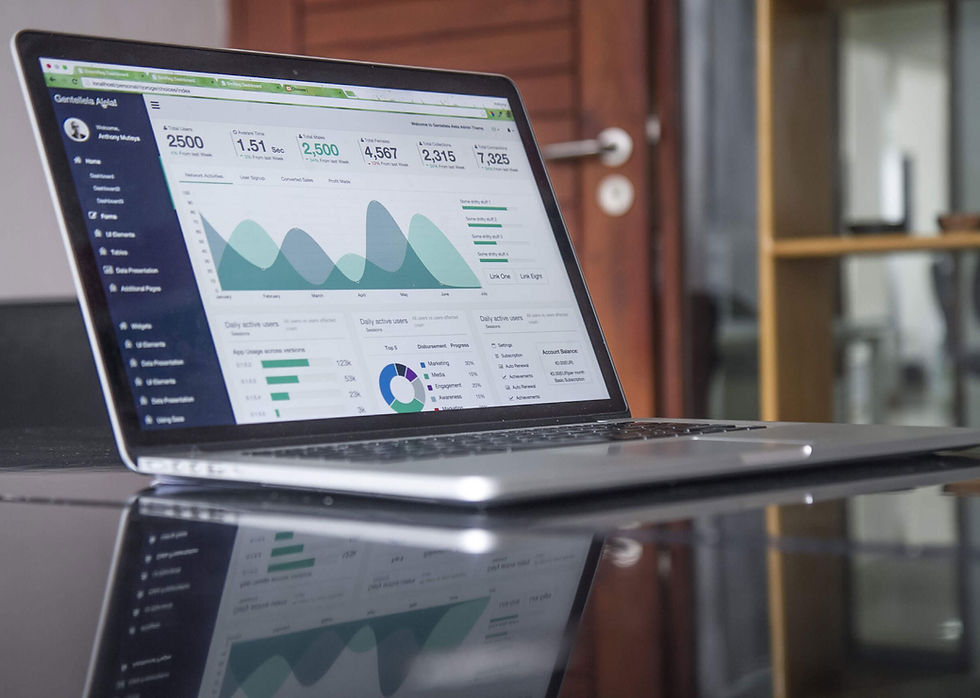
Using Analytics to Forecast Market Trends
- ddanon127
- Jun 18, 2024
- 2 min read
"Using Analytics to Forecast Market Trends" involves leveraging data analysis techniques and statistical tools to predict future movements and trends in the market. This process is crucial for businesses, investors, and policymakers to make informed decisions. Here’s a breakdown of how it works:


1. **Data Collection**:
- **Historical Data**: Gathering past market data, including prices, sales volumes, economic indicators, and other relevant metrics.
- **Real-time Data**: Incorporating current data from various sources like social media, news, and transaction records.
2. **Data Processing**:
- **Cleaning**: Removing any inconsistencies, errors, or irrelevant information from the data set.
- **Normalization**: Standardizing data to ensure consistency, making it easier to compare and analyze.
3. **Exploratory Data Analysis (EDA)**:
- Identifying patterns, trends, and anomalies within the data.
- Visualizing data through charts, graphs, and other tools to understand underlying relationships.
4. **Modeling and Statistical Analysis**:
- **Descriptive Analytics**: Summarizing past data to understand what has happened historically.
- **Predictive Analytics**: Using statistical models and machine learning algorithms to forecast future trends. Common techniques include regression analysis, time series analysis, and machine learning models like ARIMA, Prophet, and LSTM (Long Short-Term Memory networks).
- **Prescriptive Analytics**: Recommending actions based on the predictions to optimize outcomes.
5. **Machine Learning and AI**:
- Implementing advanced algorithms that can learn from data, identify complex patterns, and improve predictions over time.
- Techniques such as neural networks, support vector machines, and ensemble methods can be used to enhance forecasting accuracy.
6. **Scenario Analysis and Simulations**:
- Creating different scenarios based on various assumptions to understand potential outcomes.
- Running simulations to see how different factors might impact market trends.
7. **Validation and Testing**:
- Backtesting models using historical data to assess their accuracy and reliability.
- Validating models with out-of-sample data to ensure they can generalize well to new, unseen data.
8. **Implementation and Monitoring**:
- Deploying the forecasting models in real-world settings to make strategic decisions.
- Continuously monitoring model performance and updating them with new data to maintain accuracy.
9. **Reporting and Visualization**:
- Presenting the forecasted trends through dashboards, reports, and visualizations that are easy to understand for stakeholders.
- Using tools like Tableau, Power BI, or custom-built dashboards to communicate insights effectively.
### Applications of Market Trend Forecasting:
- **Financial Markets**: Predicting stock prices, commodity prices, and currency exchange rates.
- **Retail**: Forecasting product demand to manage inventory and optimize supply chains.
- **Real Estate**: Projecting property prices and market demand.
- **Economics**: Anticipating economic indicators like GDP growth, unemployment rates, and inflation.
- **Marketing**: Understanding consumer behavior to tailor marketing strategies and campaigns.
By utilizing analytics to forecast market trends, organizations can gain a competitive edge, mitigate risks, and capitalize on opportunities more effectively.




Comments